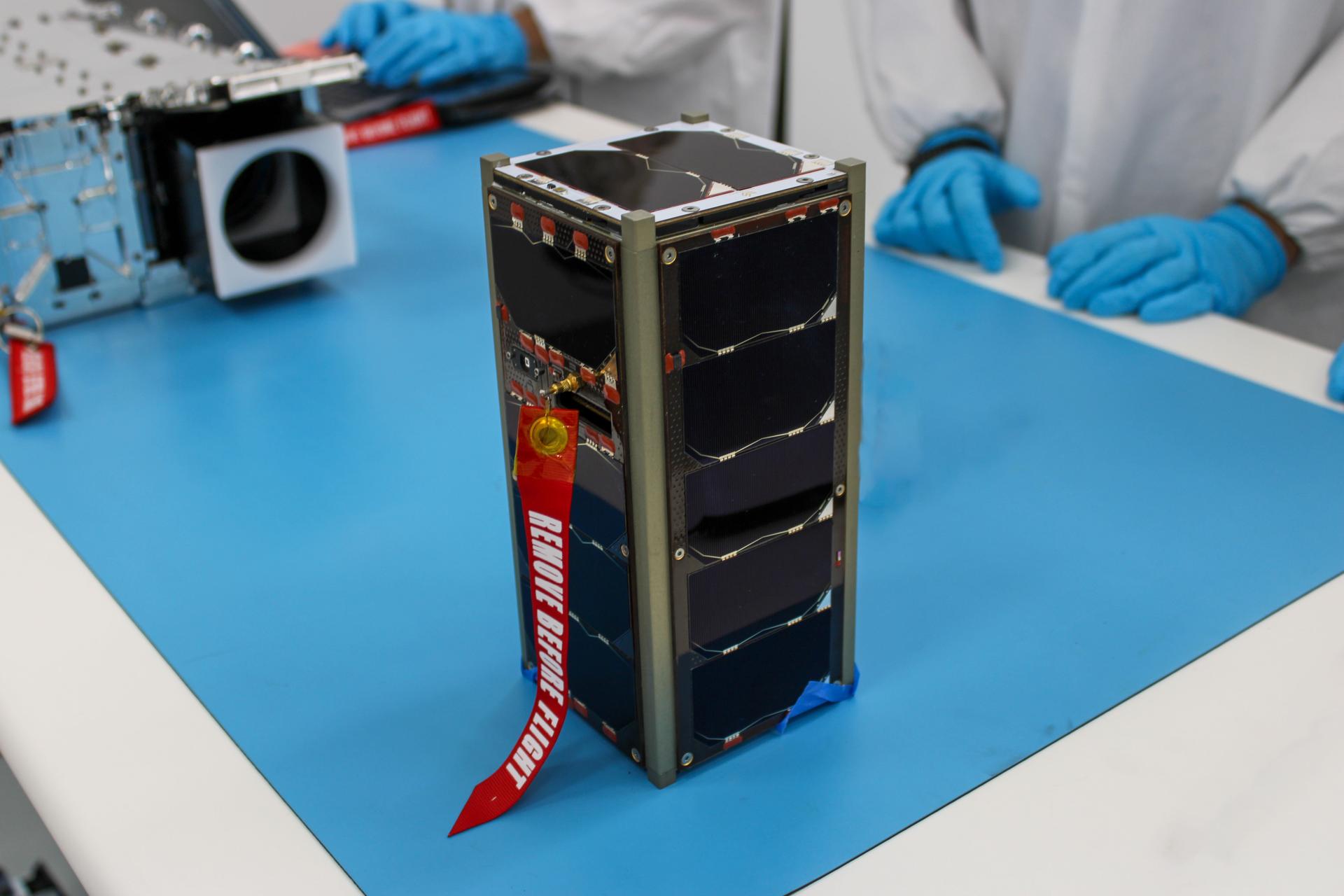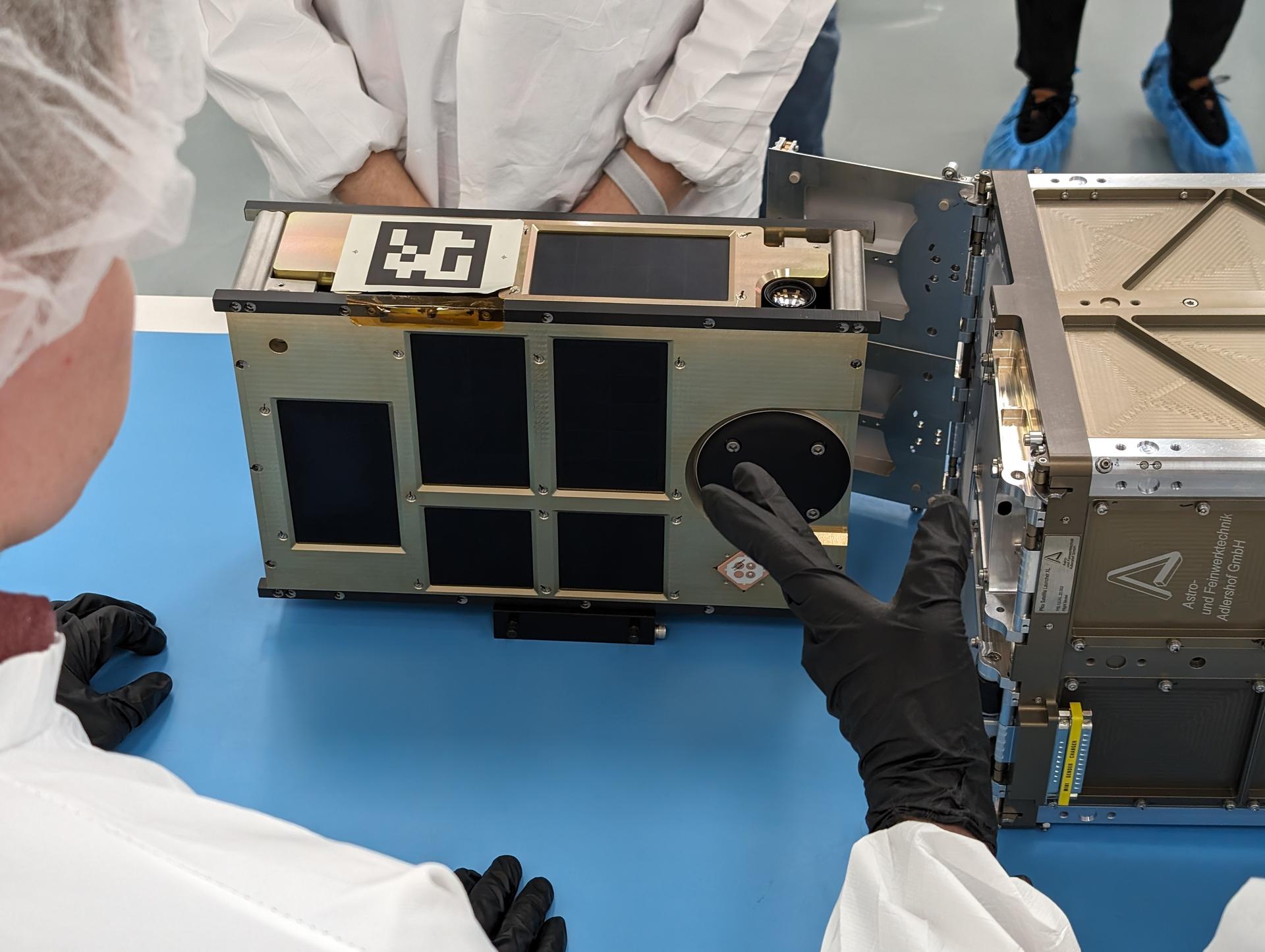

NASA is readying for the launch of several small satellites to space, built with the help of students, educators, and researchers from across the country, as part of the agency’s CubeSat Launch Initiative.
The ELaNa 43 (Educational Launch of Nanosatellites 43) mission includes eight CubeSats flying on Firefly Aerospace’s Alpha rocket for its “Noise of Summer” launch from Space Launch Complex-2 at Vandenberg Space Force Base, California. The 30-minute launch window will open at 9 p.m. PDT Wednesday, June 26 (12 a.m. EDT Thursday, June 27).
NASA’s CubeSat Launch Initiative (CSLI) is an ongoing partnership between the agency, educational institutions, and nonprofits, providing a path to space for educational small satellite missions. For the ELaNa 43 mission, each satellite is stored in a CubeSat dispenser on the Firefly rocket and deployed once it reaches sun-synchronous or nearly polar orbit around Earth.
CubeSats are built using standardized units, with one unit, or 1U, measuring about 10 centimeters in length, width, and height. This standardization in size and form allows universities and other researchers to develop cost-effective science investigations and technology demonstrations.
Read more about the small satellites launching on ELaNa 43:
CatSat – University of Arizona, Tucson
CatSat, a 6U CubeSat with a deployable antenna inside a Mylar balloon, will test high-speed communications. Once the CatSat reaches orbit, it will inflate to transmit high-definition Earth photos to ground stations at 50 megabits per second, more than five times faster than typical home internet speeds.
The CatSat design inspiration came to Chris Walker after covering a pot of pudding with plastic wrap. The CatSat principal investigator and professor of Astronomy at University of Arizona noticed the image of an overhanging light bulb created by reflections off the concave plastic wrap on the pot.
“This observation eventually led to the Large Balloon Reflector, an inflatable technology that creates large collecting apertures that weigh a fraction of today’s deployable antennas,” said Walker. The Large Balloon Reflector was an early-stage study developed through NASA’s Innovative Advanced Concepts program.
KUbeSat-1 – University of Kansas, Lawrence
The KUbeSat-1, a 3U CubeSat, will use a new method to measure the energy and type of primary cosmic rays hitting the Earth, which is traditionally done on Earth. The second payload, the High-Altitude Calibration will measure very high frequency signals generated by cosmic interactions with the atmosphere. KUbeSat-1 is Kansas’ first small satellite to launch under NASA’s CSLI.
MESAT-1 – University of Maine, Orono
MESAT-1, a 3U CubeSat, will study local temperatures across city and rural areas to determine phytoplankton concentration in bodies of water to help predict algal blooms. MESAT-1 is Maine’s first small satellite to launch under NASA’s CSLI.
R5-S4, R5-S2-2.0 - NASA’s Johnson Space Center
R5-S4 and R5-S2-2.0, both 6U CubeSats, will be the first R5 spacecraft launched to orbit to test a new, lean spacecraft build. The team will monitor how each part of the spacecraft performs, including the computer, software, radio, propulsion system, sensors, and cameras in low Earth orbit.
“In the near term, R5 hopes to demonstrate new processes that allows for faster and cheaper development of high-performance CubeSats,” said Sam Pedrotty, R5 project manager at NASA’s Johnson Space Center in Houston. “The cost and schedule improvements will allow R5 to provide higher-risk ride options to low-Technology Readiness Levels payloads so more can be demonstrated on-orbit.”
Serenity – Teachers in Space
Serenity, a 3U CubeSat equipped with data sensors and a camera, will communicate with students on Earth through amateur radio signals and send back images. Teachers in Space launches satellites as educational experiments to stimulate interest in space science, technology, engineering, and math among students in North America.
SOC-i – University of Washington, Seattle
Satellite for Optimal Control and Imaging (SOC-i), a 2U CubeSat, is a technology demonstration mission of attitude control technology used to maintain its orientation in relation to the Earth, Sun, or other body. This mission will test an algorithm to support autonomous operations with constrained attitude guidance maneuvers computed in real-time aboard the spacecraft. SOC-i will autonomously rotate its camera to capture images.
TechEdSat-11 (TES-11) – NASA’s Ames Research Center, California’s Silicon Valley
TES-11, a 6U CubeSat, is a collaborative effort between NASA researchers and students to evaluate technologies for use in small satellites. It’s part of ongoing experiments to evaluate new technologies in communications, a radiation sensor suite, and experimental solar panels, as well as to find ways to reduce the time to de-orbit.
NASA awarded Firefly Aerospace a fixed-price contract to fly small satellites to space under a Venture-Class Launch Services Demonstration 2 contract in 2020. NASA certified Firefly Aerospace’s Alpha rocket as a Category 1 in May, which authorized its use during missions with high risk tolerance.
NASA’s Launch Services Program is responsible for launching rockets delivering spacecraft that observe Earth, visit other planets, and explore the universe.
Follow NASA’s small satellite missions blog for launch updates.









